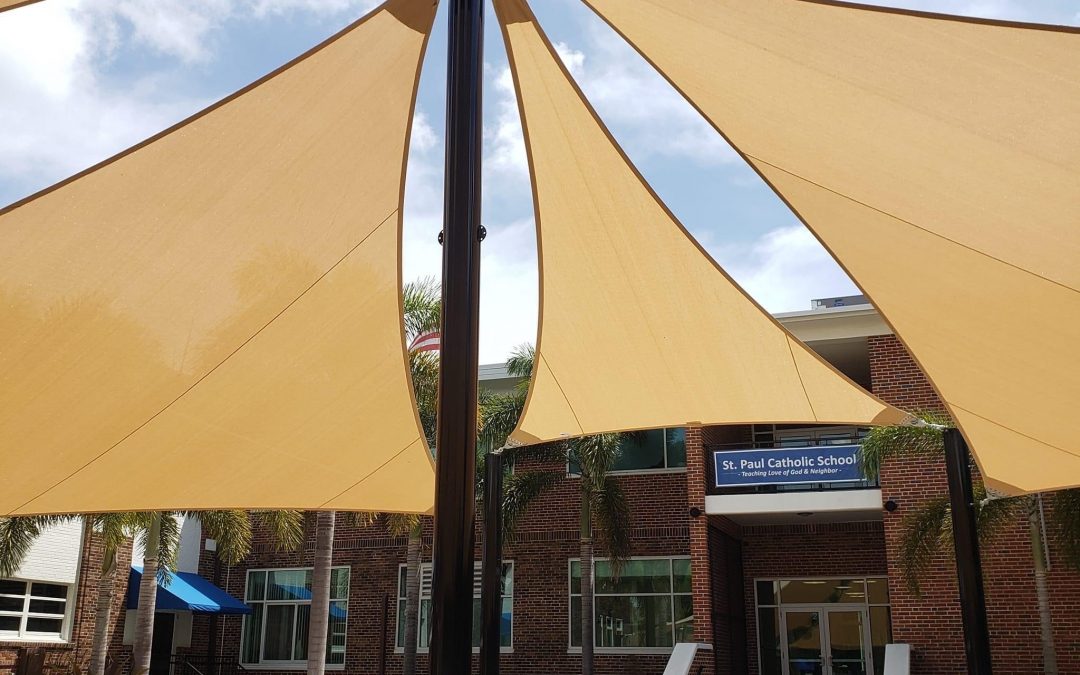When it comes to outdoor architecture, few elements combine beauty and functionality like shade sails and tension fabric structures. These elegant solutions are found everywhere—from public parks and playgrounds to high-end commercial developments and private backyards. But behind their sweeping curves and modern design lies a critical component that determines their longevity and performance: the fabric.
We’ll explore why high-quality fabric is essential for the effectiveness, durability, and aesthetic value of shade sails and tension fabric structures.
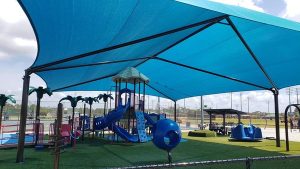 What Are Shade Sails and Tension Fabric Structures?
What Are Shade Sails and Tension Fabric Structures?
Before diving into materials, let’s briefly define the two:
-
Shade Sails are tensioned fabric canopies typically anchored at three or more points. They’re versatile, often used to provide sun protection in open spaces.
-
Tension Fabric Structures are more complex. They use a combination of flexible membranes and engineered supports to create large, sculptural coverings—perfect for stadiums, walkways, event spaces, and transportation hubs.
Both types rely on fabric to do the heavy lifting—literally. So, why does quality matter so much?
1. UV Protection and Heat Reduction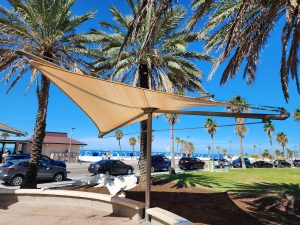
Outdoor structures exist to shield us from the elements, especially harmful UV radiation. High-quality fabrics come with UV stabilizers built into the material, providing superior protection and significantly reducing exposure risks.
Better fabrics also reflect more sunlight, leading to cooler shaded areas, which is essential for comfort in hot climates.
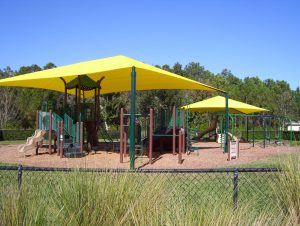 2. Durability Against the Elements
2. Durability Against the Elements
Shade sails and tensioned structures are exposed to wind, rain, sun, dust, and temperature fluctuations year-round. Inferior fabrics may fade, tear, or degrade in a matter of months.
Top-tier materials—like PTFE-coated fiberglass, PVC-coated polyester, or HDPE (high-density polyethylene)—are engineered to withstand harsh conditions for 10 to 30 years or more, depending on the application.
3. Structural Integrity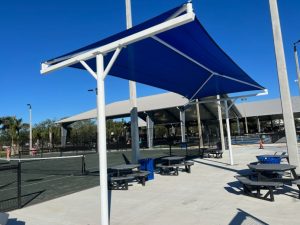
In tensioned designs, the fabric is an integral part of the structure’s performance. It’s not just hanging there; it’s actively supporting loads and withstanding mechanical forces.
Low-grade fabrics can stretch, sag, or even rupture under tension. Quality fabrics maintain their dimensional stability, ensuring the structure retains its shape and strength over time.
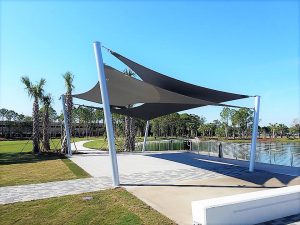 4. Aesthetic Longevity
4. Aesthetic Longevity
One of the main appeals of these structures is their modern, sleek look. Faded, dirty, or misshapen fabric undermines that aesthetic.
Premium fabrics come with surface treatments that resist staining, mildew, and UV damage. They also offer a wide range of colorfast options that won’t fade with time—maintaining that fresh, vibrant look year after year.
5. Lower Long-Term Costs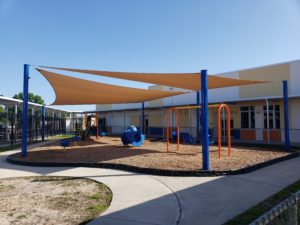
While high-quality fabric might come with a higher upfront cost, it saves money over the long run:
-
Fewer replacements
-
Less maintenance
-
Reduced energy use (especially in commercial applications)
-
Better ROI on large-scale architectural projects
In contrast, cutting corners on fabric usually leads to early failures, unplanned repairs, and compromised safety.
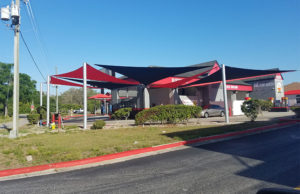 Choosing the Right Fabric: What to Look For
Choosing the Right Fabric: What to Look For
If you’re planning a shade or tensile structure, here are a few qualities to prioritize in the fabric:
-
UV resistance rating (UPF 50+ is ideal)
-
Tensile strength and stretch resistance
-
Fire retardancy certifications
-
Warranty length
-
Proven manufacturer track record
Some trusted fabric brands in the industry include Polytex, Commercial NinetyFive 340, SolaMesh, and Architec 400 —each offering high-performance materials designed for architectural use.
Shade sails and tension fabric structures are more than just architectural statements—they’re investments in safety, sustainability, and style. Choosing high-quality fabric ensures that investment stands the test of time, resisting the elements and maintaining its beauty and strength for years to come.
Whether you’re a designer, builder, or property owner, make the smart choice: build with fabric that lasts.

